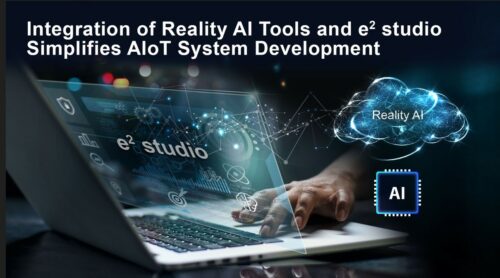Facilitates seamless data sharing for enhanced collaboration between embedded and AI/ML projects, streamlining the development of AI applications at the edge and endpoint.

Renesas Electronics Corporation has unveiled seamless interfaces between its Reality artificial intelligence (AI) Tools and the e² Studio integrated development environment. This empowers designers to exchange data, projects, and AI code modules between these essential programs. The modules are seamlessly integrated into its microcontroller unit (MCU) Software Development Kits to enhance real-time data processing capabilities. With a simple button press, this data can be seamlessly transferred to related projects within Reality AI Tools. Moreover, users can effortlessly download and incorporate AI/ML classifiers generated within Reality AI Tools directly from the e2 studio environment.
These modules are designed to streamline data collection from devices employing MCUs, whether they are part of the company’s kits or customer hardware. This integration significantly accelerates the design process for AI and tiny machine learning (ML) applications, particularly at the edge and endpoint of IoT (Internet of Things) networks. The company’s AI tools are a software ecosystem facilitating comprehensive AI application development. This platform lets users automatically explore sensor data and generate highly optimised models.
Mohammed Dogar, Vice President of Global Business Development and Ecosystem at Renesas, emphasised the crucial role of real-world sensor data in building successful AI implementations. He stated, “The key to successful AI implementations lies in developing and training models using real-world sensor data. We provide the market’s most effective solution by seamlessly facilitating data sharing between our Reality AI Tools and e2 studio products, enabling designers to rapidly create precise and robust AI applications.”
In addition to data transfers, the company is enhancing cross-platform project coordination between embedded and AI environments. Users can synchronise and transfer project lists from e2 studio to Reality AI Tools. Furthermore, they can associate an e2 studio project with a Reality AI Tools project and even create a new Reality AI Tools project directly from within the e2 studio environment. The company is developing a library of application examples and reference solutions in collaboration with ecosystem partners. These examples serve as proof-of-concepts or blueprints for specific use cases. Its AI application library has over 30 reference solutions, spanning real-time analytics, vision, and voice applications.






